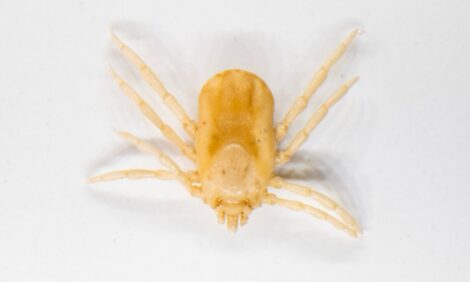



Brazil Livestock and Products Semi-Annual Report 2008
This article provides the cattle industry data from the USDA FAS Livestock and Products Semi-Annual 2008 report for Brazil. A link to the full report is also provided. The full report includes all the tabular data, which we have omitted from this article.Report Highlights:
Beef production is estimated to increase in 2008 by 2.5 percent, a lower rate than last year, while beef exports are expected to drop by 5 percent in volume, because of the new restrictions imposed by the European Union. However, strong domestic demand and exports to new markets likely will offset most of the export losses to the European Union. Post also projects pork production and exports to increase in 2008 because of firm export and domestic demand.
Executive Summary
Post revised production and trade for Brazilian beef in 2008 to reflect new estimates made by trade sources. Beef production likely will continue to increase, but at a lower rate than last year, and it likely will be mostly driven by strong domestic demand. Beef exports are expected to drop in volume in 2008, because of new restrictions imposed by the European Union, although Brazilian exporters are redirecting their exports to new and diversified markets overseas. Post also projects pork production and exports to increase in 2008 because of firm export and domestic demand. In addition, higher hog prices have improved the profit margins of producers.
The outlook for the Brazilian economy also supports higher domestic demand for animal protein in 2008, as consumers’ real income is expected to continue to increase in 2008, along with an economic growth near 5 percent, despite current world economic uncertainties. However, there are some concerns among economic analysts about higher consumer prices for animal proteins due to the impact of ethanol production on world feed prices, even though Brazil’s 2007-08 corn and soybean crops are projected to break record levels. In addition, the Brazilian cattle cycle is beginning an upward price cycle due to the high levels of cow slaughter in recent years. This is also projected to impact packers’ profitability and possibly retail beef prices in the next year.Commodity Outlook, Cattle and Beef
Production
Post revised beef production in 2008 to increase by 2.5 percent, compared to a 5 percent increase in the previous year. This reflects our estimated drop in beef exports this year. However, domestic demand for beef remains firm due to higher consumer purchasing power, and it is expected to offset some of the drop in exports. In 2007, beef exports (including variety beef) accounted for nearly 17 percent of total domestic beef production, a slightly higher share than in 2006.
Trade
Post revised beef exports to decline around 5 percent in 2008 due to the impact of the current import restrictions from the European Union. However, Brazilian packers expect to mitigate some of the losses to the European Union by shifting some of the exports to the domestic market and by increasing exports to other major destinations. In 2008, packers will focus their market promotion in the Middle East, Indonesia, Morocco and China.
Post estimates an overall drop in beef exports to the European Union of 36 percent from last year’s total volume exported to that market. Most of the decline (42 percent) will come from prime boneless beef (HTS 0202), since processed beef (HTS 1602) is expected to increase by 5 percent. Our estimate assumes that the current restrictions from the EU will maintain a short list of cattle farms for most of 2008.Because of the European Union restrictions, the Brazilian Beef Packers Association estimates a monthly financial loss to Brazil of US$ 50 million and a total dismissal of plant employees between 5,000 and 6,000 people.
Review of 2007 beef exports.
Brazilian beef exports reached another record in 2007 despite partial import restrictions from some countries due the outbreak of FMD in October 2005. The total volume exported, including variety meats, increased by 5.2 percent in volume (1.586 million metric tons versus 1.507 million metric tons in 2006 – PWE equivalent). The total value exported increased by nearly 12 percent US$ 4.353 million, versus US$ 3.890 million in 2006, reflecting an increase of 7 percent in the average export price.
Despite some hurdles over animal health and certification issues, beef exports to Russia increased by 41 percent in 2007, and Russia remains as the most important market for Brazilian packers, followed by the European Union. In 2007, overall beef exports to the European Union dropped by 27 percent, mostly frozen boneless beef (less 51 percent), while exports of processed beef increased by 11 percent. Egypt remains as the third largest importer of Brazilian beef, despite a decline of 11 percent in the last year.Note: Differences between export data reported by Brazilian trade sources and those used by Post are due to the use of different conversion factors. Brazilian sources use a 2.5 percent factor for conversion of processed beef into Carcass Weight Equivalent (CWE), while post uses 1.79. The same applies for boneless beef, as Post uses 1.42 as the conversion factor, while Brazilian trade sources use 1.36. In addition, and as per FAS reporting instructions, variety meats (beef offals), HTS 0206 are not included for reporting purposes in our PSD and Trade Matrix tables.
Further Reading
| - | You can view the full report, including tables, by clicking here. |
List of Articles in this series
To view our complete list of Livestock and Products Annual, and Semi-Annual reports, please click hereFebruary 2008


